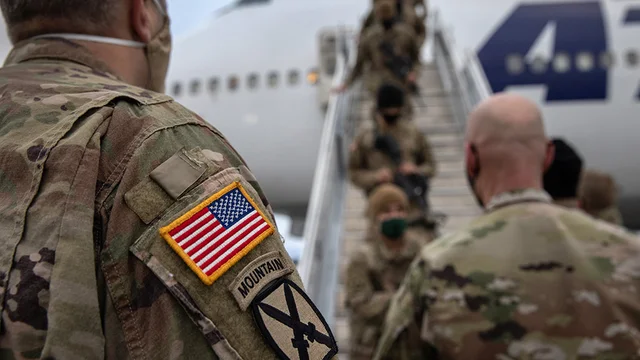The U.S. military withdrawal from Afghanistan has officially begun in line with President Biden’s order for all U.S. troops to be out by Sept. 11, the White House confirmed Thursday.
“A drawdown is underway,” deputy White House press secretary Karine Jean-Pierre told reporters traveling on Air Force One.
Biden ordered the withdrawal earlier this month, intent on bringing to a close America’s longest war by the 20th anniversary of the terrorist attacks that sparked the conflict.
ADVERTISEMENT
Biden had said the withdrawal would start by Saturday, which was the deadline for a full U.S. withdrawal under an agreement with the Taliban signed by the Trump administration.
About 2,500 U.S. troops remain in Afghanistan nearly 20 years after the United States first invaded the country.
In addition to those U.S. troops, the 7,000 or so NATO troops still in Afghanistan are also withdrawing, as are all U.S. contractors.
Nonessential staff at the U.S. Embassy in Kabul have also been ordered to leave the country ahead of an expected increase in violence amid the withdrawal.
The Taliban has largely refrained from attacks on U.S. and coalition personnel since it signed the agreement with the United States last year but has threatened to resume attacks since the withdrawal is not meeting the May 1 deadline in that deal.
On Thursday, Jean-Pierre detailed the force protection measures the U.S. military is taking in light of those threats.
In addition to the deployment of B-52 bombers and the extended deployment of the USS Dwight D. Eisenhower aircraft carrier the Pentagon has previously confirmed, Jean-Pierre confirmed that parts of an Army Ranger task force are deploying to Afghanistan to help with force protection.
“The president’s intent is clear: The U.S. military’s departure from Afghanistan will not be rushed or hasty,” she said. “It will be deliberate and conducted in a safe and responsible manner that ensures the protection of our forces. Potential adversaries should know that if they attack us during our withdrawal, we will defend ourselves and our partners with all the tools at our disposal.”
U.S. Central Command will also “continually assess” force protection requirements and “has the flexibility” to move more assets into and out of the region as necessary, she added.
Biden’s withdrawal has been met with skepticism from lawmakers on both sides of the aisle worried about a potential collapse of the Afghan government leading to a resurgent threat from al Qaeda.
But it has also been praised by some Democrats and anti-interventionist Republicans who say it is far past time to bring troops home from America’s longest war.
During his first address to Congress on Wednesday, Biden touted the withdrawal as an example of U.S. leadership.
“American leadership means ending the forever war in Afghanistan,” he said to a standing ovation from Democrats in attendance.
Biden, however, stressed the U.S. military would retain the ability to strike threats in Afghanistan from afar, pledging that “we will maintain an over-the-horizon capability to suppress future threats to the homeland.”
Gen. Frank McKenzie, the commander of U.S. Central Command, has said the ability to conduct counterterrorism operations in Afghanistan without U.S. troops stationed there will be harder but “not impossible.”
McKenzie has also expressed concern about Afghan forces’ ability to hold on to territory without U.S. military support, telling lawmakers that the Afghan forces “certainly will collapse” if both military and financial support ends.
U.S. officials have insisted financial support will continue even after the withdrawal.
But Biden’s top envoy for Afghan peace talks, Zalmay Khalilzad, has offered a more optimistic assessment, telling lawmakers this week he doesn’t foresee an “imminent collapse” of the Afghan government after U.S. troops leave and that “it would be a mistake” to underestimate the capabilities of the Afghan forces.
 Eurasia Press & News
Eurasia Press & News




